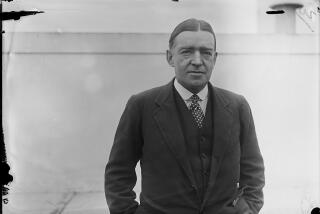Wrecks From Around World Yield Treasures
- Share via
The Central America and the Titanic are not the only shipwrecks being explored or salvaged.
In Cape Cod, treasure hunter Barry Clifford is continuing to recover treasure and artifacts from the slave ship Whydah, which was hijacked in 1716 by pirate Black Sam Bellamy. The pirates looted dozens of other ships before the Whydah ran aground 700 yards off Wellfleet in 1717. Clifford has recovered as much as $25 million worth of jewels, gold and artifacts.
Off a coral reef off Norfolk Island near Australia’s east coast, divers sponsored by the Australian Bicentennial Commission in January and February recovered hundreds of artifacts from the Sirius, the flagship of a British fleet that took more than 1,000 convicts to Australia in 1788. The divers also have recovered artifacts from the Pandora, which was carrying some of the rebellious crew members from the Bounty when it sank off northern Australia in 1790.
Liner’s Treasures
About 55 miles south of Nantucket Island off Cape Cod, treasure hunter William Flower’s team of divers are recovering gold and artifacts from the luxury liner Republic, which sank in 1909 after it was struck by the Italian passenger liner Florida. The Republic was carrying $3 million in gold coins purchased by the Bank of France and now estimated to be worth as much as $1.6 billion.
Earlier this month, divers led by treasure hunter Robert Mester began salvage efforts on the luxury liner Governor, which lies in 220 feet of water in Admiralty inlet, where the Puget Sound branches off toward Seattle and Tacoma. The liner was struck by the freighter West Hartland in 1921. Mester estimates the value of artifacts at $8.5 million. On Sunday, Mester’s team suspended its attempt to recover the purser’s safe containing an estimated $1.5 million in cash and jewels because of adverse tides and underwater currents.
Next month, 30 divers from the National Park Service and the Naval Rescue Unit in Newport, R.I., are scheduled to search 4,500 acres of federally owned sea floor in Cape Cod’s National Seashore looking for ships and cargo. The locations of any objects will be mapped, but no recovery operations are planned for now.
Perhaps second only to the Titanic, the best-known sunken ship to most Americans is the Monitor, the ironclad ship used by the Confederate forces during the Civil War. And in May and June, an expedition sponsored by the U.S. Navy and the National Oceanographic and Atmospheric Administration began exploring the vessel, which rests upside down in 220 feet of water 16 miles off Cape Hatteras, N.C. They found that the Monitor is deteriorating rapidly and said extensive work will be required if it is to be preserved.
More to Read
Sign up for Essential California
The most important California stories and recommendations in your inbox every morning.
You may occasionally receive promotional content from the Los Angeles Times.













